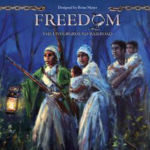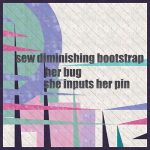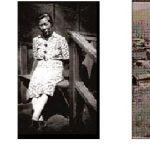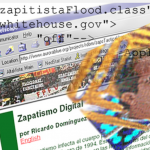2021
In this conversation and accompanying "How to Not" guide, Drs. Lai-Tze Fan, Kishonna Gray, and Aynur Kadir consider responsible theories and methods towards racial equity, racial justice, and anti-racism in game design. Their main focus is on how games can provide a platform for helping people understand and learn about these issues.
2020
Gathering screen images and texts shared by artist Les folies passagères on Instagram, Gravel-Patry addresses issues of care that affect women on a daily basis, from mental health to body dysmorphia - but also creating expansive life worlds through our relationality with the digital image, how we operationalize it so that we might think and feel our lives differently.
On feminist futures of electronic literature (and interactive narrative, more broadly construed).
Against the backdrop of écriture feminine and e-lit texts, Ensslin et. al advance methods and findings of the "Writing New Bodies" project (“WNB”; SSHRC IG 435-2018-1036; Ensslin, Rice, Riley, Bailey, Fowlie, Munro, Perram, and Wilks) to lay the foundations of Applied E-literature Research. Their aim is to develop a digital fiction for a new form of contemporary, digital-born bibliotherapy. In following the principles of critical community co-design and feminist participatory action research, WNB engages young woman-identified and gender nonconforming individuals ages eighteen to twenty-five in envisioning worlds where they feel at home in their bodies. The workshops encourage them to engage, conversationally and through reading, co-designing and writing digital fiction, with key challenges facing young women today, including cis- and heteronormative gender relations, racism, anti-fat attitudes, ableism, and familial influences on the ways young women “ought to look” (Rice). This essay originally appeared as a keynote at the 2019 ELO conference in Cork, delivered by Ensslin.
2006
Ara Wilson writes a riposte on the gathering of "waves" essays; she points out that global feminist politics provides a necessary perspective on debates about the current state of feminism.
Lisa Joyce introduces this new gathering, titled "waves," of postfeminist essays.
Alison Piepmeier examines the differences in postfeminism and third-wave feminism.
Karim A. Remtulla asks to what degree postfeminism is identical with hactivism?
Jess M. Laccetti presents a theory of "multi-mimesis" as a way to redefine female subjectivity.
2005
Julie Cupples reviews a retrospective collection of essays by Chandra Mohanty on the geopolitics of gender and race.
Cris Mazza on hijacking the terms of postfeminism.
From origin stories to progressive science fiction, Lisa Yaszek studies the changing face of feminsim.
geniwate writes along with sexless software agents and dismantles the gender politics of the programming man and his machine.
Carolyn Guertin surveys the politics of Hacktivist women.
Is there such a thing as womens' writng? Or, for that matter, womens' media? Elisabeth Joyce moves through the work of Annie Abrahams and writes against restrictive domestications of electronic media.
"Rather than gathering in the South Ballroom for the plenary, we read into gardens, playrooms, cars, stores, home offices, and kitchen tables. These sites are not homey, though, in any Palmolive way." Bill Stobb reviews a collection of writers who consider the complexities of artmaking and motherhood.
Elyce Helford frames Tank Girl as a portrait of the postfeminist woman: hyper-individualist and hyper-sexual - a woman who is quite comfortable in popular cinema but not so much so in reality.
2004
Jess Loseby on "cyber-domestic" aesthetics.







